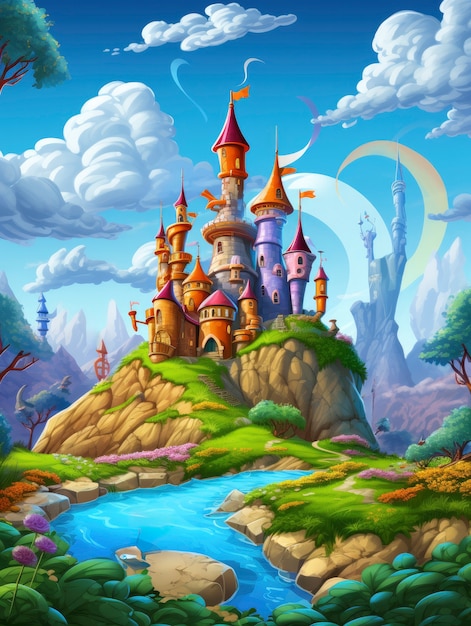
I feel like the third book in a five-book series or the second book in a trilogy always has the toughest job. They need to keep building the conflict, raising the stakes, and offering some answers and closure, but not so much that it feels like the story is over. Some authors really manage to nail this, and Marissa Meyer is one of those authors in her series.
“Cress” is the third book in The Lunar Chronicles, which just wrapped up with the release of the fifth book, “Winter”. This series is a futuristic reimagining of classic fairy tales like Cinderella, Red Riding Hood, Rapunzel, and Snow White, with the fourth book exploring the backstory of the Evil Queen. “Cinder” set up the story, “Scarlet” continued it by raising the stakes, and “Cress” pushes the main plot forward, paving the way for the backstory in “Fairest” and the conclusion in “Winter”.
We pick up the story towards the end of “Scarlet”, right when the Lunar Special Operatives are being released on an unsuspecting Earth. Cress, who’s trapped in a satellite prison, was helping Cinder in the first book and has been hiding Cinder’s ship from the Queen. Raised all alone on the satellite with amazing computer skills, Cress is a Lunar Shell, a Lunar person without any magical abilities. Under Queen Levana’s rule, all Shells were taken away and assumed dead, but we discover that’s not actually the case.
Cress has always dreamed of visiting Earth, and she gets her wish during a rescue mission that goes wrong. Captain Thorne ends up blind, and they crash-land in the African desert. Meanwhile, Scarlet is a prisoner on Luna, and Cinder, Wolf, and a Lunar guard are heading to Africa to meet Dr. Erland from the first book to learn more about Cinder’s powers.
Throughout these events, Cress transitions from dreaming of a heroic rescue to saving herself and the dashing hero. Meanwhile, Cinder is grappling with her sense of duty to a people she didn’t know she belonged to, and the moral implications of using her powers for the greater good. Scarlet’s capture leads her to cross paths with Princess Winter on Luna, which seems like it’ll be key in the final book.
As Cress and Thorne make their difficult journey through the desert, learning about themselves and each other, they eventually reunite with Cinder, Wolf, and Dr. Erland. Together, they start planning their revolt against the tyranny on Luna to save Earth. They also uncover the grim truth behind the Earth’s plague, forever altering Earth-Luna relations.
Cress wrestles with her feelings for Thorne and her sense of uselessness because she’s been locked away all her life. Cinder realizes how crucial she is to Earth’s preservation and plans a series of daring moves. In doing so, she confronts her stepmother, underscoring the idea that our choices define us. Cress faces a similar struggle, questioning her role in helping Levana’s operatives without knowing their intent and grappling with the guilt of the massacre at the end of “Scarlet”.
Themes of following orders and the power of choice run parallel to other issues in the story, such as prejudice, madness, loyalty, doing wrong for right, genetic modification, human experimentation, the fall of heroes, duty versus self, and biological warfare. Some lighthearted moments are sprinkled in to balance out the heavy themes, making for a compelling read that skillfully juggles both extremes.
With “Cress,” Meyer continues to expand her richly built world from the previous books. She reintroduces familiar characters, answers old questions, and sets up new ones, like the mystery of the Shells and the plague. The stakes feel very real, with genuine consequences for the characters’ actions, sometimes resulting in death and pain. This aspect, where actions have serious outcomes, has been one of the standout features of the series.
Romantically, the book continues to develop established couples like Scarlet and Wolf, and Kai and Cinder, while also developing the new romance between Cress and Thorne. While Scarlet and Wolf’s relationship is pretty solid, the other relationships show significant growth. Cress, who starts with a major crush on the seemingly rakish Thorne, finds herself growing into real feelings through mutual experiences and realizing her own strength.
The romance between Kai and Cinder is particularly intriguing. Their relationship has been complicated by Cinder’s identity as a cyborg, a Lunar, an escaped convict, and a Princess, as well as Kai’s role as the Earthen Emperor. Despite their deep feelings, their responsibilities often come in the way of their romance, making their story particularly touching.
What stands out in this series is the diversity of its female protagonists. Cinder, Scarlet, Cress, and Winter are distinct, with unique backgrounds and skills, making them learn from each other and contribute uniquely to their shared experiences. Meyer keeps the tension high, making readers deeply invested in the characters and their world.
With the recent release of “Fairest” and “Winter”, the story of Cinder the Cyborg Princess and her friends is nearing its end. I’m excited to see how it all unfolds. “Cress” is a fantastic addition to an already excellent series and comes highly recommended.

